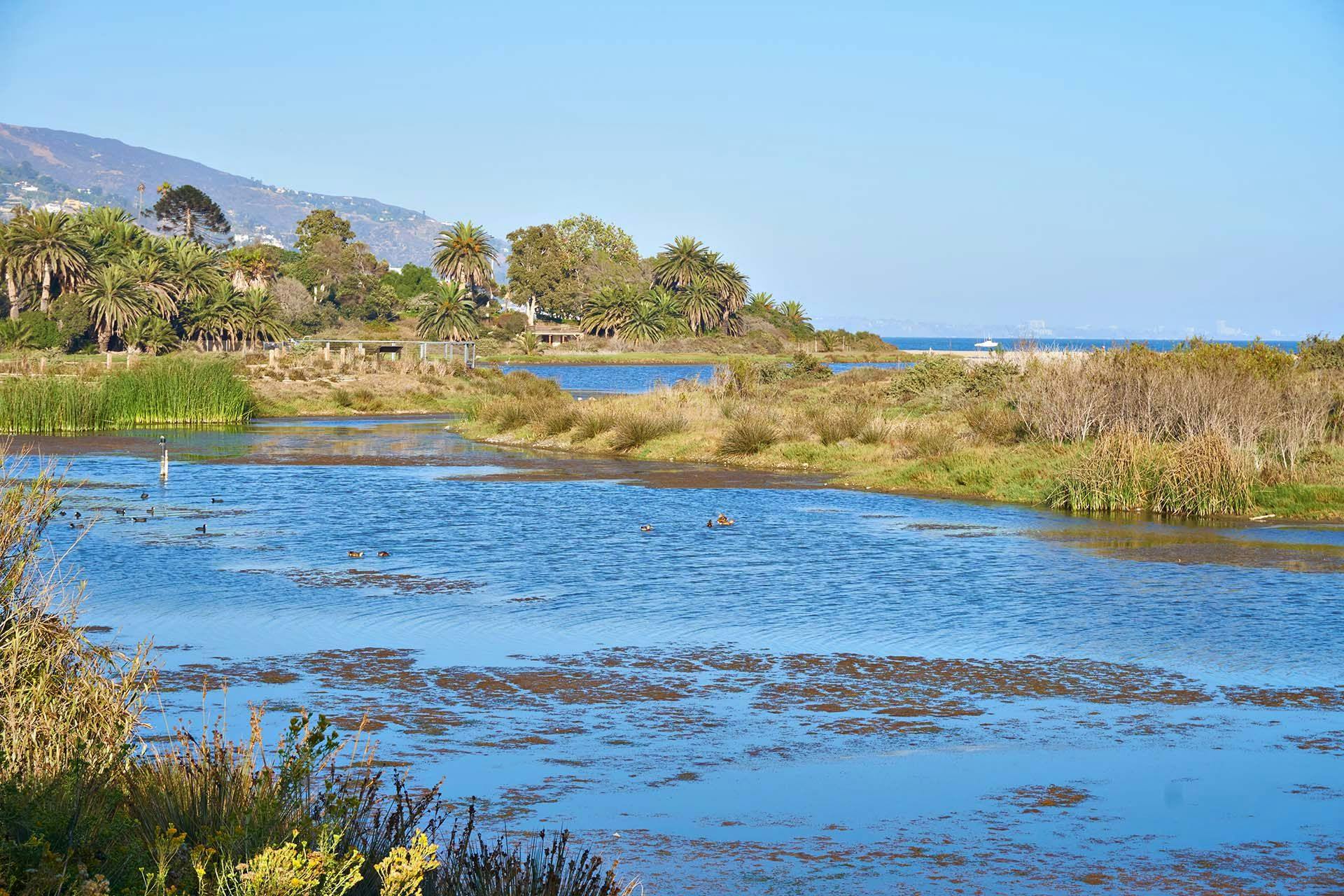Development of the Malibu Lagoon Restoration and Enhancement Project
Malibu Lagoon is a 31-acre shallow water estuary occurring at the terminus of the Malibu Creek Watershed, the second largest watershed draining into Santa Monica Bay. The lagoon is fed by fresh water from Malibu Creek and other sources. Periodically the lagoon breaches, cutting through the berm, opening the lagoon to ocean water from the Pacific Ocean over Malibu Surfrider Beach. The beach was dedicated as the first World Surfing Reserve in 2010. This popular spot attracts approximately 1.5 million visitors a year.
Malibu Lagoon was historically labelled an “impaired” water body by the U.S. Environmental Protection Agency. The Lagoon was filled in by excess sediment and suffered from low dissolved oxygen levels within the channels that threatened fish and wildlife. The Malibu Lagoon Restoration and Enhancement Project was implemented by California State Department of Parks and Recreation, California State Coastal Conservancy (SCC), Resource Conservation District of the Santa Monica Mountains (RCDSMM), The Bay Foundation (TBF), Heal the Bay, and supported by many others.
Project Highlights
